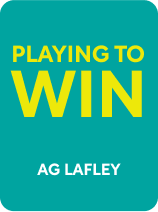

This article is an excerpt from the Shortform book guide to "Playing To Win" by AG Lafley. Shortform has the world's best summaries and analyses of books you should be reading.
Like this article? Sign up for a free trial here .
How do you figure out how to find your target audience in marketing? Why is target market analysis so important?
You learn how to find your target audience when you grasp the interconnection between geography, product offering, customer segmentation, distribution, and production. Geography, production, and distribution determine where you can sell your products, while the use-cases of your product offering and customer segmentation determine who you sell your products to. Target market analysis not only helps with target market identification, but it also helps you discover your competitors.
Read on to learn more about how to find your target audience.
Identifying Your Target Market
Question 2: What are your target markets?
After you’ve figured out your winning conditions, it’s time to figure out how to find your target audience. This second question is, along with the third, the most critical in building a winning strategy. When you know how to find your target audience, you ask on what battlefields your company will fight—in other words, what audience will you target. This can include fighting for particular customers, on particular websites or TV networks or magazines, or in specific markets.
Playing Field Choices
There are a variety of factors to consider when figuring out how to find your target audience. Consider how a business owner who wants to sell apples would approach the following questions:
- Geography: Where are you competing?
- Should the apple seller buy an orchard locally or in the next town over?
- Product: What are you offering your consumer?
- Should she plant new trees to diversify her selection? Should she make apple pies to sell as well?
- Consumers: Who are you targeting?
- Should she start by selling to just family and friends or try to find a distribution deal?
- Distribution: What strategy will you use to deliver to your consumers?
- Should she open up her orchard for picking or just sell apples wholesale to grocery stores?
- Production: How much of the production of your product will you be responsible for?
- Should she hire workers to help with the picking and packaging? How many?
Knowing how to find your target audience involves recognizing the different approaches required by small and large businesses. Small businesses, like this apple grower, have fewer questions than larger ones—for example, larger businesses might also have questions about which distribution companies are best in different parts of the country, or about whether to take business international.
Some questions about where to play are more important than others. Their urgency depends on many things—industry, the size of the company, how long a company has been around, and so on. A startup might reasonably be more concerned about their product because they need to develop a good one before they can be successful in any market. Meanwhile, a company that has been around for a long time but is struggling might think more about engaging a new target audience because they believe their product is good but is no longer working in their current market.
P&G, which is a large company, considers the consumer first. They invest a lot of money in figuring out what their customers want. In doing so, they can figure out what sort of customers are worth their time and money to pursue. Their secondary concern is distribution—they need to find retail locations and distribution services in which they can capably compete.
When figuring out how to find your target audience, also consider whom you are competing against. Some competitors have a stranglehold over certain markets and are really good at what they do, so success against them would be much more difficult than in an underdeveloped niche with fewer good competitors. However, if a company can bring unique value to a market that’s already crowded, they can rise to the top. Just remember that the goal is not just to compete but to win.

———End of Preview———
Like what you just read? Read the rest of the world's best book summary and analysis of AG Lafley's "Playing To Win" at Shortform .
Here's what you'll find in our full Playing To Win summary :
- Why the cascade strategy will help you become victorious in your chosen field of play
- Why you should make every choice with the purpose of not just competing, but winning
- How to develop a system of decision-making for your company






